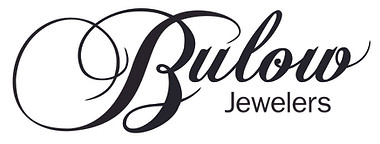
The oldest exchange of wedding rings dates back nearly 5000 years to the ancient Egyptians. They would twist reeds and even leather in to rings to be worn and exchanged and called them “rings of love”. The Egyptians saw the ring, a band with no end, a continuous circle, as a powerful symbol representing eternal life and love.
Fast forward to 2019. Although the materials used to created wedding bands have evolved, the symbolism holds true. Wedding rings still represent love and loyalty and a special bond between the two people wearing them.
Since wedding season is upon us, we thought we would put together a quick reference guide on the types of metals that are now used to create wedding rings to help you decide what is best for you. With many designs available in each category there truly is something for everyone.
The metals range from traditional gold and other precious metals to tungsten and titanium and other alternative metals. Below is a list of the most common ring metals and facts to help you in choosing the perfect ring to fit your needs:
PRECIOUS METALS
GOLD

Can be alloyed (mixed with other metals) to create other color tones of gold other than yellow such as rose and white gold
White gold will require rhodium plating because it is yellow gold that is alloyed with white metals such as silver, nickel and palladium, to make it “white”. When the white plating wears off, it will need to re-plated to make it “white” again
-Soft, dense and malleable and is easily sized
-Scratches easily. Higher karats of gold such as 18kt will scratch easier than 14kt for instance
-Price will depend on the purity of the gold; higher karats will cost more
-Will retain its value over time
PLATINUM
-Rare, dense metal
-Soft, white color; pure white
-Never fades or changes color
-Will retain its value over time
-Hypoallergenic
-Holds up well over time due to its density and will take a long time to wear down.
-Will scratch but is easily polished and cleaned up
-Most expensive metal because its density makes it heavy and metal is priced based on weight
PALLADIUM

-More rare than gold
-Naturally white color
-Often mixed with yellow gold to make white gold
-Resembles platinum but is lighter in weight and density
-Hypoallergenic
-Won’t tarnish Surface scratches are easily polished away
-Will hold up well over time
ALTERNATIVE METALS

TUNGSTEN CARBIDE
-Considerably harder than precious metals; one of the hardest materials in existence
-Extremely scratch resistant
-Will not bend but is a brittle metal and can shatter
-Dark grey in color
-Can be removed with vice grips and “cracked” off
-Although extremely hard, it’s used in many different ring styles
-Permanently polished or brushed; the finished will not wear off
-Cannot be sized; size exchange only
TITANIUM
-Very lightweight
-Dark grey in color
-Shatterproof
-Hypoallergenic
-Cannot be sized; size exchange only
COBALT
-White, platinum like color
-Heavier than titanium, lighter than tungsten
-Scratch resistant
-Shatterproof
-Hypoallergenic and Bio compatible
-Cannot be sized; size exchange only
BLACK DIAMOND CERAMIC
-Lightweight
-Extremely scratch resistant
-Color is permanent and goes all the way through; available in several colors
-Cannot be sized; size exchange only
-Can be removed with vice grips and “cracked” off
ZIRCONIUM

-Scratch resistant
-Hypoallergenic
-When oxidized, the black surface is as hard as sapphire and the black is permanent
-Cannot be sized; size exchange only
Each metal offers a unique and one of a kind design for you and your special someone to choose. No matter which metal, Bulow Jewelers can help you find or design the perfect ring to suit your needs and lifestyle! For more information click here or call us at 303-872-2500.
